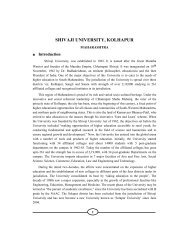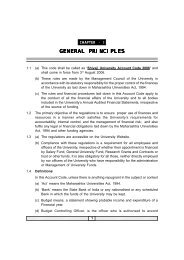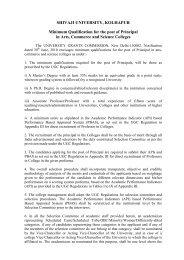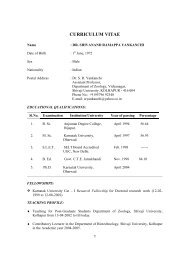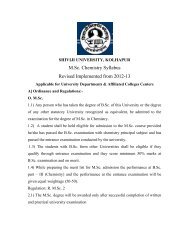Economics(Paper-4) - Shivaji University
Economics(Paper-4) - Shivaji University
Economics(Paper-4) - Shivaji University
You also want an ePaper? Increase the reach of your titles
YUMPU automatically turns print PDFs into web optimized ePapers that Google loves.
promote and enhance social welfare. First, larger resources are allocated to military<br />
and foreign policies for achieving international recognition and external power and<br />
influence. Secondly, the resources of mature economy be directed to promote the<br />
welfare of society and thirdly, the state should direct its resources to the expansion of<br />
consumption levels beyond the basic necessities of life like food, clothing and shelter.<br />
Kindleberger (and not Rostow) illustrates these stages with a Gompartz or ‘S’<br />
curve.<br />
Further development<br />
Income<br />
1. Traditional<br />
2. Preconditioning<br />
3. Take-offTime<br />
4. Maturity<br />
5. Mass-Consumption<br />
0<br />
1 2 3 4 5<br />
Time<br />
The diagram shows that a typical growth path of an economy. ‘S’ curve states that<br />
an economy starts its growth slowly, picks up gradually and then proceeds very rapidly<br />
before slowing down at some late stage to become asymptotic at some limit.<br />
B<br />
Critical Examination of the Rostow’s Theory:<br />
The important points of criticism against the Rostow theory are:<br />
1. The technological Approach to Development is basically incorrect:<br />
In Rostow’s model development is not the result of policies; policies are the result<br />
of development. This cannot be accepted. This approach leads to logical confusion.<br />
2. Leading Sectors may not ‘lead’:<br />
Kuznets and Cairncross are of the opinion that leading sectors may not lead. If we<br />
examine the development linkages of industries, we can find that cotton textile industry<br />
of Manchester or automobile industry of USA did not bring all the development.<br />
3. Stage overleap and Works spill over to the Next Stages:<br />
Kuznets, Habakkuk, Cairncross and Meier have commanded that the things that<br />
are supposed to happen in a particular stage, may spill over to other stages also.<br />
123456789012345678901234567890121234567<br />
123456789012345678901234567890121234567<br />
17<br />
123456789012345678901234567890121234567<br />
123456789012345678901234567890121234567<br />
123456789012345678901234567890121234567<br />
123456789012345678901234567890121234567<br />
123456789012345678901234567890121234567<br />
123456789012345678901234567890121234567





